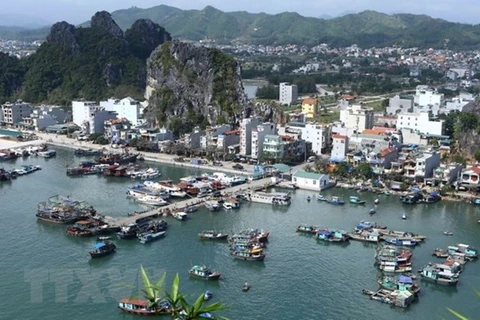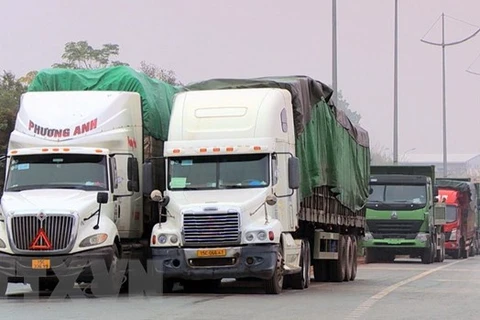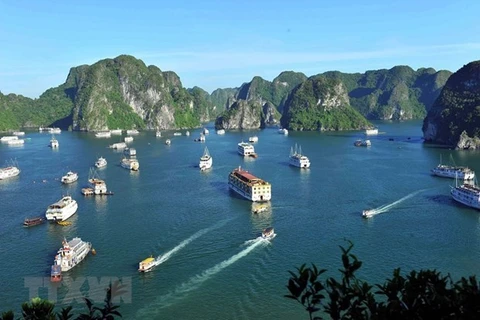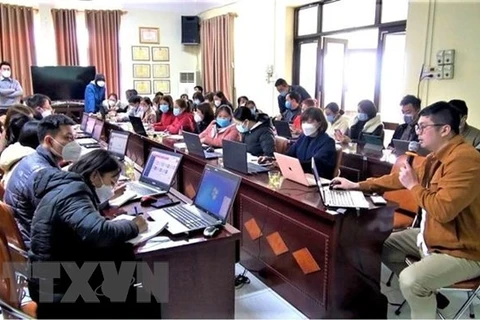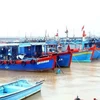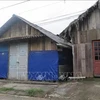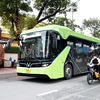Quang Ninh (VNA) – The northern province of Quang Ninh has set a target of becoming a centrally-run city with seven administrative units at district level by 2030.
The goal is included in a resolution on the province’s planning in the 2021-2030 period with a vision to 2050, which was adopted by the provincial People’s Council in early July.
Accordingly, Quang Ninh will strive to become a model locality of the country in all fields, a society that is wealthy, civilised and modern, and a dynamic development hub. It will also become an international tourism, sea-based economic centre and a gateway of the northern key economic region and the whole country.
Quang Ninh is designed to have 13 administrative units with 13 urban areas in 2025, and 12 administrative units by 2030 after Mong Cai city is merged into Hai Ha district. The province plans to become a centrally-run city with seven inner districts of Ha Long, Cam Pha, Uong Bi, Mong Cai-Hai Ha, Dong Trieu, Quang Yen and Van Don. The total population of the province is projected to be about 2.64 million.
After the resolution was passed, Secretary of the provincial People’s Council Nguyen Xuan Ky asked the People’s Committee of Quang Ninh to promptly submit the provincial planning to the Prime Minister for approval within the third quarter of this year.
He requested local sectors, agencies and the People’s Committees of localities across the province to strengthen the popularisation of the resolution to create social consensus. The focus should be on reviewing, supplementing the plan and build new ones, and designing specific and effective plans of actions.
At the same time, it is necessary to strengthen regional connections to create a firm foundation for the gross regional domestic product (GRDP) growth to two digits in the long-term until 2030.
Quang Ninh has defined a number of breakthrough measures for its development. These include the development of a healthy living ecosystem with outstanding support and encouragement policies to attract talent, develop high-quality human resources, transforming structure of labour and employment. It also includes rapidly increasing the scale and quality of training within the population. At the same time, the locality will build industrial parks and economic zones at suitable locations that are large enough with full infrastructure to attract investment in the processing, manufacturing and electronic manufacturing industries using green and renewable energy.
Meanwhile, the province will conduct comprehensive digital transformation, focusing on promoting the digital economy. It will also continue to develop and complete the strategic infrastructure system in a synchronous, modern and multi-functional manner, including digital infrastructure, and strengthening regional and international connectivity to transform into a logistics centre of the region and the country.
Quang Ninh will also develop a system of modern and smart cities to improve the living quality of locals.
Ha Long city will become the province’s political, administrative, economic and cultural centre, while Cua Luc Bay will be developed into a centre of connectivity for the expansion of urban areas northwards.
The province will focus on developing two economic corridors of Ha Long-Dong Trieu in the west and the Ha Long-Mong Cai in the north. At the same time, development of the Van Don Economic Zone and the Mong Cai border economic zone will be defined as two breakthrough economic solutions.
Three development areas will also be built – Ha Long open mega urban area with a population of about 1.9 million; a sea-based tourism area, which comprises Van Don, Ba Che, Tien Yen and Co To, with 323,000 people; and a border gate economic urban area, comprising Mong Cai, Hai Ha, Binh Lieu and Dam Ha, with a population scale of 420,000. This will be the key area for the development of border gate economy, the gateway of ASEAN to Northeast Asian countries with a system of highway infrastructure and large-scale seaports in Hai Ha and Van Ninh./.
The goal is included in a resolution on the province’s planning in the 2021-2030 period with a vision to 2050, which was adopted by the provincial People’s Council in early July.
Accordingly, Quang Ninh will strive to become a model locality of the country in all fields, a society that is wealthy, civilised and modern, and a dynamic development hub. It will also become an international tourism, sea-based economic centre and a gateway of the northern key economic region and the whole country.
Quang Ninh is designed to have 13 administrative units with 13 urban areas in 2025, and 12 administrative units by 2030 after Mong Cai city is merged into Hai Ha district. The province plans to become a centrally-run city with seven inner districts of Ha Long, Cam Pha, Uong Bi, Mong Cai-Hai Ha, Dong Trieu, Quang Yen and Van Don. The total population of the province is projected to be about 2.64 million.
After the resolution was passed, Secretary of the provincial People’s Council Nguyen Xuan Ky asked the People’s Committee of Quang Ninh to promptly submit the provincial planning to the Prime Minister for approval within the third quarter of this year.
He requested local sectors, agencies and the People’s Committees of localities across the province to strengthen the popularisation of the resolution to create social consensus. The focus should be on reviewing, supplementing the plan and build new ones, and designing specific and effective plans of actions.
At the same time, it is necessary to strengthen regional connections to create a firm foundation for the gross regional domestic product (GRDP) growth to two digits in the long-term until 2030.
Quang Ninh has defined a number of breakthrough measures for its development. These include the development of a healthy living ecosystem with outstanding support and encouragement policies to attract talent, develop high-quality human resources, transforming structure of labour and employment. It also includes rapidly increasing the scale and quality of training within the population. At the same time, the locality will build industrial parks and economic zones at suitable locations that are large enough with full infrastructure to attract investment in the processing, manufacturing and electronic manufacturing industries using green and renewable energy.
Meanwhile, the province will conduct comprehensive digital transformation, focusing on promoting the digital economy. It will also continue to develop and complete the strategic infrastructure system in a synchronous, modern and multi-functional manner, including digital infrastructure, and strengthening regional and international connectivity to transform into a logistics centre of the region and the country.
Quang Ninh will also develop a system of modern and smart cities to improve the living quality of locals.
Ha Long city will become the province’s political, administrative, economic and cultural centre, while Cua Luc Bay will be developed into a centre of connectivity for the expansion of urban areas northwards.
The province will focus on developing two economic corridors of Ha Long-Dong Trieu in the west and the Ha Long-Mong Cai in the north. At the same time, development of the Van Don Economic Zone and the Mong Cai border economic zone will be defined as two breakthrough economic solutions.
Three development areas will also be built – Ha Long open mega urban area with a population of about 1.9 million; a sea-based tourism area, which comprises Van Don, Ba Che, Tien Yen and Co To, with 323,000 people; and a border gate economic urban area, comprising Mong Cai, Hai Ha, Binh Lieu and Dam Ha, with a population scale of 420,000. This will be the key area for the development of border gate economy, the gateway of ASEAN to Northeast Asian countries with a system of highway infrastructure and large-scale seaports in Hai Ha and Van Ninh./.
VNA

